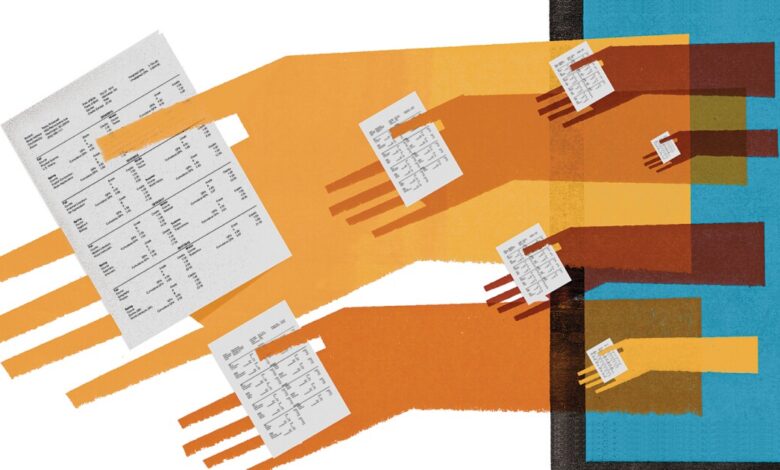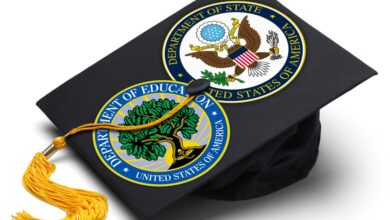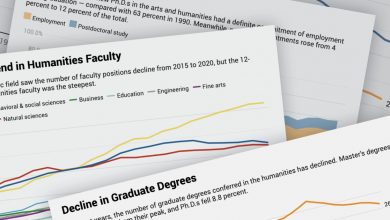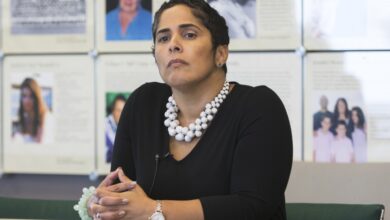Thousands of Students Take Courses Through Unaccredited Private Companies. Here’s a Look Into One of Them.

A growing number of students are taking courses offered by unaccredited private companies and completing them in a matter of days or weeks — often for less than $200 — and then transferring the credits to colleges.
The practice was pioneered by companies like StraighterLine, which entered the market in 2009 to a mix of intrigue and skepticism, seeking to transform college access and affordability. StraighterLine boasts credit-transfer agreements with more than 150 American institutions, most of them private, though more than 2,000 colleges have accepted its courses for credit on a case-by-case basis. It saw 45,000 students enroll in at least one course on its platform in 2021.
Other companies, including Sophia and Saylor Academy, market similar models.
That growth comes in response to a perfect storm of skyrocketing higher-education costs, more adult learners seeking flexibility, and drops in enrollment that have spurred colleges to beef up retention and re-engagement efforts with “stopped-out” students.
Third parties can help students “save time and money to a degree,” said Sarah Cunningham, director of operations and engagement for learning evaluations at the American Council on Education. And because students with prior learning credentials “persist and graduate at higher rates, they are also ending up taking more courses at the college that gives those credits a home … a win-win.”
StraighterLine’s partner institutions — some of which have created online academies using its courses — lauded these arrangements as a way to raise enrollment, remove barriers to degree completion, and fulfill their missions to serve all learners’ needs. But The Chronicle also identified instances of faculty disapproval, overstated promises around student performance, and questions about accountability, transparency, and academic integrity.
Some academics and policy analysts worry about a creeping corporatization of higher education, and what that could mean for the integrity of the college degree.
“Because of cost pressures, institutions are hustling to find the cheapest Lego building blocks to create credentials with,” said Barmak Nassirian, a higher-education policy analyst working with the nonprofit Veterans Education Success. “I’m not against innovation, and God knows we need it. But … you really have to be very naïve to believe that some outsider can come in and somehow excel at the thing that you are the foremost expert on. The university is supposed to be the foremost expert.”
This all matters when considering the proportion of degree requirements a student can fulfill through an unaccredited provider such as StraighterLine. While gen-ed course credits advance a student only so far toward their degree, colleges like Thomas Edison State University, in New Jersey, can technically admit students with as many as 90 transfer credits. (StraighterLine officials noted that most users take about two courses — a fraction of the 120 credits typically required for a bachelor’s degree and the 60 needed for an associate degree.)
“It’s a very unregulated market,” said Jeff Harmon, vice provost for strategic initiatives and institutional effectiveness at TESU, which has long recognized credits from StraighterLine. The university accepts about 250,000 transfer credits a year from numerous entities. “But we also don’t want to throw the baby out with the bathwater. Because there are third-party providers who are doing a pretty good job at educating their students.”
‘We Wanted to Disrupt’
Over a decade ago, StraighterLine’s founder, the education entrepreneur Burck Smith, saw a need in the market for access and affordability, said Amy Smith, the company’s chief learning officer. The need was particularly acute for nontraditional students: Adults with children or full-time jobs. Those who’d dropped out. College athletes and members of the military. Motivated high-school students trying to get ahead on college admissions requirements. Work-force members brushing up on skills. (Two-thirds of StraighterLine’s users are in the 22-to-39 age bracket. Nine percent are 16 to 21 years old.)
To “lower the cost and de-risk higher ed” seemed worthwhile, she said. “We wanted to not break higher ed in any way, but we wanted to disrupt it in a way that was favorable to the American population.”
StraighterLine now offers 65 asynchronous general-education courses, including English 101, college algebra, American government, and general chemistry. Students most commonly take the courses directly through StraighterLine — paying a one-time fee per three-credit course, typically in the range of $59 to $99 — and then request credit transfers to an accredited institution. There’s a separate $99-a-month subscription fee that covers the cost of e-textbooks from publishers like McGraw Hill and VitalSource, and student-support services, including 10 hours of tutoring a month through Tutor.com.
Of the roughly 130 partner colleges StraighterLine lists on its website, about 85 percent are private colleges. Nearly a quarter are for-profit colleges such as Capella University, DeVry University, and University of Phoenix.
Nassirian isn’t surprised that private nonprofits make up the largest chunk. “The vast majority of them are highly tuition dependent — and it’s getting tougher and tougher to talk people into taking on massive amounts of debt,” he said. “So being able to cut costs for them … it makes a lot of sense.”

Further Reading
More recently, the company has formed “academies” with institutions like Grambling State University, in Louisiana, and Colorado State University at Pueblo. These academies are branded and marketed through the university with specific populations in mind — such as students who do not currently meet admissions requirements, or who need to quickly check off that pesky macroeconomics course in order to graduate on time — but the courses are from StraighterLine.
The courses are rarely, if at all, modified for particular institutions that agree to partner (this is by design, to ensure a standardized product for any user in any state). Three articulation agreements The Chronicle reviewed stated that courses, course content and e-texts, student-support services, assessments, grading, and academic-integrity safeguards are all conducted through StraighterLine.
Credit-transfer agreements with private companies like StraighterLine are concerning to faculty members like Jonathan Rees, a history professor at CSU-Pueblo, which formed CSU Pueblo Academy with StraighterLine in 2021.
“This is the first time I have heard anything” about a partnership with StraighterLine, he wrote in an email, expressing disappointment that the university hadn’t done more to involve faculty members like himself. “Teaching,” he added, “is the primary responsibility of the permanent faculty. When any of that is being farmed out to a private company, it sets a disturbing precedent.”
CSU Pueblo Academy is still considered in the “pilot” phase, with 26 active students and 16 accepted StraighterLine courses as of mid-September, said Donna Souder Hodge, the university’s vice president for operations and advancement. She noted that department chairs are responsible for approving transfer credits and other curricular decisions.
A Question of Quality
That StraighterLine is unaccredited most likely doesn’t help ease faculty wariness.
It can’t be accredited, even if it wanted to be, as it doesn’t confer degrees. That means the company isn’t directly beholden to an accrediting agency, or the U.S. Department of Education. It also means students can’t use federal financial aid to take its courses.
“It’s really on the colleges and, I would say, the accreditors to make sure the colleges are doing the right thing when they are accepting credits,” said Wesley Whistle, policy director of the higher-education program at New America.
StraighterLine takes numerous steps to ensure quality courses, Amy Smith said. Full- and part-time faculty members who design the courses — and there are at least three involved for each one — have terminal degrees in their field, and higher-education teaching experience.
Every course it offers has also received a stamp of approval from the American Council on Education, which, for decades, has conducted faculty-led evaluations of nontraditional course options to determine whether to recommend them for college course credit. Just 10 percent of the various entities that seek review are eligible for it, and courses get re-evaluated every three years.
ACE’s review process is not equivalent to accreditation, which involves an intensive evaluation of an entire institution. A section of StraighterLine’s “About Us” page touting its ACE approval, however, is labeled “Accreditation.” Asked why this potentially confusing wording was used, a company spokesperson wrote via email that “people often search for the word accreditation, so having it as a subhead helps direct them to our information on ACE.”
(The company altered the language beneath the label after The Chronicle asked about it. Now it clearly states that “StraighterLine is not accredited.” )
College officials interviewed by The Chronicle said StraighterLine courses still undergo their own review process — the rigor varies — to ascertain whether the courses are comparable to the ones their institutions offer. A faculty member in that discipline looks at the syllabus: Are the student learning outcomes the same? Does the type of learning go beyond rote memorization? They look at the course description: Is it covering the same topics? They look at the reading material: What textbooks are being used, and are there peer-reviewed journal articles?
They often involve advisers, too. Students interested in Grambling State’s Global Academy, which has enrolled more than 200 students in the last two years, “have to first come to Grambling; they link up with an adviser, and we advise them through the process,” said Roshunda Belton-Cardoza, associate vice president for academic affairs.
Officials at CSU-Pueblo and TESU confirmed that students’ transcripts specify credits that are transferred in, meaning that grades in those courses are not counted toward a student’s college GPA. (Apart from the final exam, StraighterLine students are allowed to retake a quiz up to three times, retaining the highest grade.)
Cost Considerations
The fact that StraighterLine isn’t accredited didn’t bother Kathy White, who graduated this spring from Grambling State. A break from college in the 1980s because of homesickness had turned into a decades-long hiatus when she started a family and entered the work force. White had her family and “white picket fence,” but for years she’d itched to finish her degree. And after taking three StraighterLine courses through Grambling Global Academy and around eight classes through Grambling State itself, she did it: She earned a diploma from an accredited college.
“I was able to get a teaching certificate. I’m here now, making $56,000 a year as a new teacher,” said White, who teaches third and fourth grades. “It’s like a dream come true. … I wanted to do it, I needed to do it, and I was able to do it for me.”
For Zaneta Green, a 32-year-old student who’s in the military, StraighterLine courses have made it possible to continue working on her degree during deployments to places like Iraq. She tried to take some traditional online courses while overseas earlier this year, and “it was probably the most gruesome thing I’ve ever done. It was horrible,” she said. “You’re working full-time and you’re trying to get these classes done, but you’re halfway across the world on an 11-hour time [difference], so when they’re closed, you’re open, and you can’t get any help.”
StraighterLine’s asynchronous format and flexibility is critical for someone who’s often “in the field” navigating erratic internet availability, she said. She’s completed and transferred credits from four StraighterLine courses so far, and is currently taking another four.
Green added that StraighterLine’s lower prices helped make college attainable for her. Her military benefits don’t cover the full cost of college tuition.
Students pay as little as $158, subscription fee included, for a three-credit course through StraighterLine, versus nearly $1,000 on average for online courses at accredited colleges, according to 172 institutions that responded to a survey by U.S. News & World Report. At some of the academies, it’s a flat rate — $125 at Grambling State and $160 at CSU-Pueblo — for students to take multiple courses.
Analysts like Nassirian say that price point makes them cock an eyebrow; how could a company manage to provide college-level courses at “a fraction of the cost” without cutting corners? Smith attributes the price difference to having fewer overhead costs. “If you think about a university, they have infrastructure and facilities and buildings and campuses and lawns and flowers and parking and football teams and all of this college campus life in addition to their core mission,” she said.
Hodge, the college vice president in Pueblo, Colo., said lower-cost options are desperately needed in communities like hers. According to the U.S. Census Bureau, the median household income there is about $43,000. “The worry around cost is so real” for students, she said, so it was critical to “figure out smart ways to reduce the time to degree and give students a faster path to a major.”
How much StraighterLine pockets versus the college is agreement-dependent. Hodge said CSU-Pueblo has a 50-50 revenue-share agreement. Grambling State makes “no money” from the at least 20 StraighterLine courses offered through its Global Academy, Belton-Cardoza said; the financial benefit comes when a student continues working toward their degree through Grambling State. Thomas Edison State has “72 course equivalencies for StraighterLine courses approved for credit transfer,” said Harmon, the university’s provost, but has no established academy with StraighterLine and no money changing hands.
Maintaining Integrity
As with other online-education offerings, there are signs that StraighterLine can be used to cheat.

After posting on Reddit in search of StraighterLine students to interview, a Chronicle reporter received a message from a since-deleted account offering to complete StraighterLine course assignments for a fee. The user promised to score higher than a 90 percent on all assignments leading up to the final (which is often proctored) so even “if you get low grade on final then you can easily pass your course.”
It may very well have been a bot. Still, it raised the question: What does StraighterLine do to encourage academic integrity in its courses?
Officials say that at the start of each course, students must take an “Academic Honesty” lesson and quiz, where “we talk about citing and sourcing and paraphrasing and summarizing and all the nooks and crannies that would help the student put together honest materials,” said Melanie Glennon, English faculty and instructional designer at StraighterLine.

Further Reading
Apart from a few qualitative courses like English 101 — where final assessments are essay-based — courses have a live, proctored final exam that includes student ID verification. For essay-based final assessments, students must sign an honor-code statement, and faculty graders run submitted material through Turnitin.com to check for plagiarism. Graders look out for red flags, too, like an unexpectedly quick submission time.
These steps “are generally the best practices put forward that I know of” for online courses at colleges as well, Joseph Thibault, vice president for student support and academic services, added.
‘Not Enough Data’
The lack of comprehensive data on student outcomes also worries analysts like Whistle and Nassirian, who said it feels like “a black box.” Are students getting what they’re promised? What proportion of the time are students successfully enrolling at an accredited institution, and having their credits accepted? And are those credits successfully transferring as gen-ed credits, or elective credits?
Smith acknowledged that the company is “unfortunately not 6,000 registrars,” and therefore doesn’t have data on the proportion of its students who end up successfully transferring — and applying their credits — to colleges.
StraighterLine’s website nonetheless cites some impressive claims. Its college partner page touts, for example, that 97 percent of “successful StraighterLine students pass their courses on the first try.” Smith, however, told The Chronicle that between 72 percent and 78 percent of students pass their StraighterLine courses, depending on subject matter, and clarified that 97 percent of that group passes on the first try.
Its outcomes page also states that students who go through StraighterLine before entering college are 41 percent more successful at completing their degrees compared with peers who went straight to college. When The Chronicle asked about this data point, the company clarified that it is based on one study of Strayer University, a for-profit institution.
There are data snapshots here and there that suggest StraighterLine’s model can be successful. Broadly speaking, a study of adult students published in 2020 found that those who came to college with prior learning credits had a credential completion rate of 49 percent, compared with 27 percent among those without these credits.
Limited case studies of some StraighterLine partners exist as well: Students taking StraighterLine courses at Michigan’s Baker College, for example, reportedly return to Baker College at a rate of 91 percent; in 2020, the national retention rate was 44.6 percent for part-time students and 78.2 percent for full-time students at four-year private colleges, respectively, according to the National Student Clearinghouse Research Center.
Tracking appears to notably vary by institution, though. A spokesperson for University of Maryland Global Campus, another partnering institution, told The Chronicle that it does not track which students enroll with StraighterLine credits.
Little information was able to be gleaned from former partners, either. Brookhaven College, for example — now Dallas College Brookhaven Campus — joined with StraighterLine in the 2018-19 academic year as part of the U.S. Department of Education’s Educational Quality Through Innovative Partnerships pilot. The project, known as Equip, was meant to track student success via a handful of partnerships to determine whether students taking courses from unaccredited providers could receive federal Title IV funding. (The pilot ended up fizzling, and no such data or continuing federal aid distributions came out of it).
The college “withdrew from the experiment before its program became operational” with StraighterLine, a spokesperson with the Department of Education confirmed. Dallas College Brookhaven Campus was unable to say why it pulled out, citing difficulty finding someone who had been close to the project to discuss it with The Chronicle.
Numerous attempts to reach five other former StraighterLine partners were unsuccessful.
“I understand the idea” behind all this, Whistle said. But “some things are just always going to be too good to be true.”
Source link






